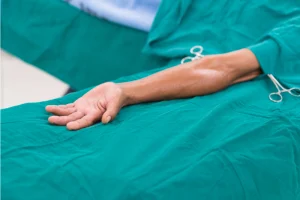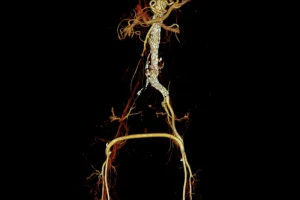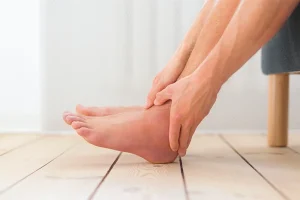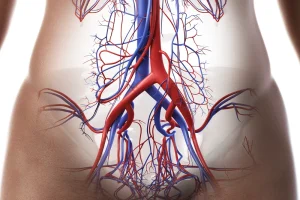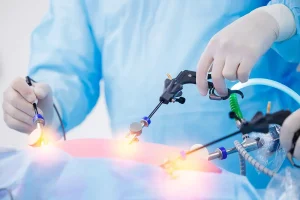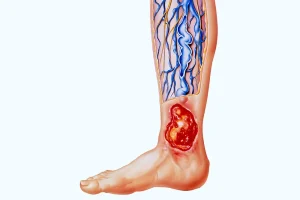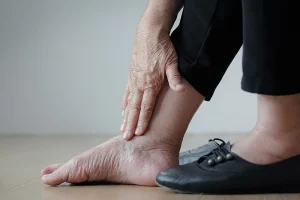Treatment of Pelvic Varicose Veins by Embolization or Venous Stenting
Pelvic Varicose Veins Treatment by Embolization or Venous Stenting
Home » Treatment of Pelvic Varicose Veins through Embolization or Venous Stenting
Medical Procedures
Vascular Techniques
Endovascular Techniques
Conditions Treated
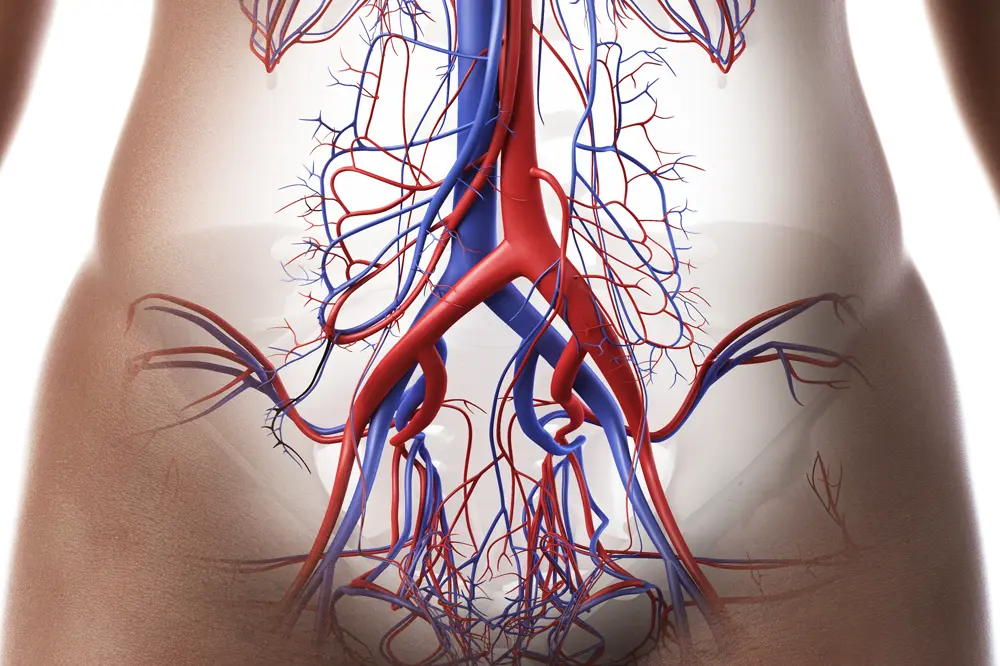
What are pelvic varicose veins?
Pelvic varicose veins are dilated veins in the pelvic area that occur when blood can’t return to the heart efficiently. Because of this, blood tends to stay in the veins around the pelvic organs, causing symptoms that affect your daily comfort. You may experience a feeling of heaviness in the lower abdomen, pelvic pain or even unpleasant symptoms during intercourse. It’s a common condition in women in their childbearing years, but can also occur in men, causing similar conditions such as varicoceles and hemorrhoids.
Why do pelvic varicose veins occur?
The veins in the pelvic area, including those around the ovaries and genitals, play an important role in carrying blood from the pelvic area back to the heart. However, when the valves in the veins don’t work properly, blood backs up and the veins begin to dilate, putting pressure on the surrounding organs.
Also, orthostatic position (standing or sitting) and the pressure of gravity on the blood flow can worsen symptoms throughout the day. So, if you notice that your symptoms intensify after long periods of standing, the condition may be the cause of your discomfort.
Symptoms of pelvic varicose veins
Among the most common symptoms of pelvic varicose veins are:
- Pelvic pain or heaviness – a persistent feeling of pressure in the lower abdomen.
- Urinary incontinence – caused by the pressure of dilated veins on the bladder.
- Colon discomfort – can cause irritable bowel syndrome.
- Pain during intercourse – can be intermittent or constant.
These symptoms may improve or even temporarily disappear when you lie flat with your pelvis raised, as this position helps the blood circulate more efficiently.
Treatment of pelvic varicose veins by embolization
Treatment of pelvic varicose veins by embolization is a minimally invasive and highly effective procedure that can quickly bring relief from symptoms of chronic pain or discomfort. This method is particularly indicated for restoring balance to the circulation without compromising surrounding organs. The procedure is performed with great precision: the doctor inserts a thin catheter into the affected vein, using Doppler imaging to pinpoint the exact location of the dilated area. A special substance (called a sclerosant) is then injected to block the blood flow in the affected vein, causing it to close and gradually be absorbed by the body.
Compared to other treatments using heat or laser, embolization is gentle on the body, ensuring a precise and risk-free action on sensitive tissues or surrounding organs. The procedure takes about an hour, and the fact that it doesn’t require hospitalization means you can quickly return to your daily activities. Many patients who have chosen this procedure at our clinic tell us how they have felt a difference from the very first days, noticing a clear reduction in pain and pelvic pressure.
Clinical studies have shown that pelvic vein embolization is a safe and effective procedure with a success rate of 84.4% and a significant improvement in pelvic pain symptoms among women with venous disorders, demonstrating the importance of this method in the management of chronic discomfort. Embolization is therefore a safe and modern solution that gives you both lasting results and a quick recovery to get your life back to normal in no time.
Treatment of pelvic varicose veins with venous stenting
If you are experiencing venous compression, we may recommend venous stenting. This involves inserting a stent (a tubular metal device) into the affected vein to keep it open and facilitate proper blood circulation. At VenArt, we perform this intervention under advanced image guidance, and our doctors have extensive experience in such procedures.
A common example of venous compression is May-Thurner syndrome. This condition is characterized by compression of the left common iliac vein by the right iliac artery, significantly impacting the circulation of the pelvic veins. The incidence of the syndrome is twice as high in women compared to men, suggesting that the female pelvic anatomy may aggravate this compression.
Associated symptoms include swelling, pain and an increased risk of venous thrombosis, highlighting the importance of correct diagnosis and therapeutic interventions, such as pelvic vein embolization or stenting, to relieve these conditions.
Request an appointment
Pelvic venous stenting in post-thrombotic syndrome
In post-thrombotic syndrome, venous stenting can play a crucial role in restoring adequate blood flow. Post-thrombotic syndrome often occurs after deep vein thrombosis and is manifested by chronic pain, swelling and discomfort, significantly affecting quality of life.
The venous stenting procedure involves the placement of a stent in the affected pelvic veins in order to relieve pain and improve blood circulation. Our specialized doctors use advanced technology to ensure a successful procedure tailored to your specific needs. This minimally invasive technique not only helps relieve symptoms, but also gives you a faster recovery so you can return to your daily activities without discomfort.
Conclusion
Pelvic varicose veins can significantly affect your quality of life, causing discomfort and unpleasant symptoms. However, there are effective and modern solutions available, such as embolization and venous stenting treatments. Both options offer considerable advantages, but the choice of the most appropriate method depends on individual needs and medical assessment.
If you’re experiencing symptoms associated with pelvic varicose veins, we encourage you to schedule a consultation at the VenArt clinic, where our team of specialists will guide you through the diagnostic process and provide you with the best treatment options.
Sources:
https://www.jvscit.org/article/S2468-4287(21)00132-5/fulltext
https://www.sciencedirect.com/science/article/pii/S2213333X15000104
https://www.sciencedirect.com/science/article/abs/pii/S1051044320305340
Medical consultant: Prof. Dr. Jérôme Cau

